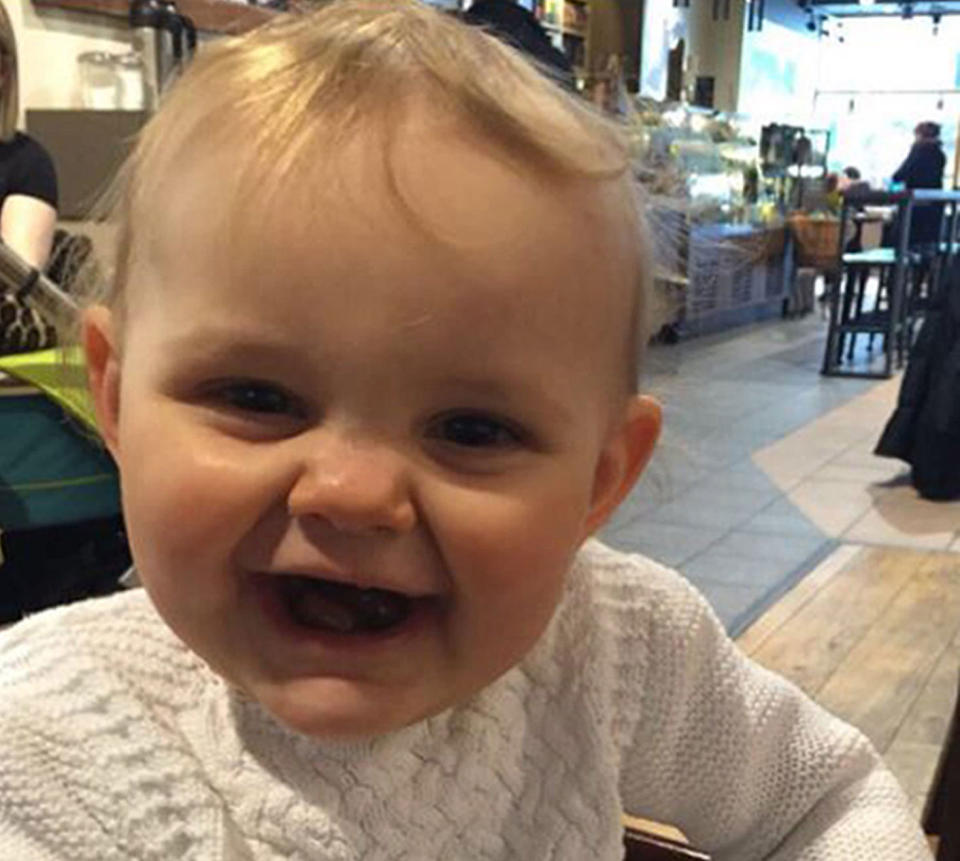'Missed opportunities' to help Elsie Scully-Hicks who was killed by her father, report finds
Authorities ‘missed opportunities’ to protect a baby girl murdered by her father two weeks after he formally adopted her, an independent review has found.
Elsie Scully-Hicks died in May 2016 after she was violently shaken and thrown to the floor by Matthew Scully-Hicks, 32, at their home in Llandaff, Cardiff.
Scully-Hicks, of Delabole, Cornwall, was jailed for life and ordered to serve a minimum of 18 years after being convicted of murder following a trial at Cardiff Crown Court last year.
An independent review has found that Scully-Hicks passed the rigorous adoption process with flying colours and professionals viewed his care of 18-month-old Elsie through a “positive lens”.
In the months before that fatal attack, the fitness instructor had inflicted a catalogue of injuries on Elsie, including a large bruise to her forehead and a fractured leg, but professionals saw Elsie’s injuries in isolation, lacked “professional curiosity” and accepted what Scully-Hicks told them, the review found.

At a press conference in Cardiff on Thursday, Lance Carver – the director of social services at Vale of Glamorgan Council – apologised for errors in Elsie’s case.
He said social workers and staff from all agencies saw the adoption as “a really positive solution for Elsie”, saying that : ‘positive lens’ meant they were not looking in the way they should have been.
MOST POPULAR STORIES ON YAHOO UK TODAY:
Man loses all four limbs after dog lick leads to infection
Euromillions couple win £58m – after ticket was ripped up and thrown in the bin
Tommy Robinson breaks his silence on ‘mental torture’ of prison after being bailed
McDonald’s serves pregnant woman coffee mixed with cleaning fluid
Mr Carver said no disciplinary actions had been taken against any members of staff as the report did not “indicate that it would be appropriate”.
Elsie, who was born in November 2014, was taken into care five days later and placed with Scully-Hicks and his husband, Craig, in September 2015, when she was aged 10 months.
Two months later she was referred to an orthopaedic outpatient clinic by her GP after suffering an injury to her leg but while one fracture was found, a registrar failed to spot a second one that would have raised safeguarding concerns.
The report found that in December 2015 Elsie suffered a large bruise to her forehead but two social workers and an independent reviewing officer didn’t make any reference to it in their notes and it wasn’t recorded by children’s services and health professionals.

Elsie suffered a further bruise to her forehead in January 2016, which Scully-Hicks gave no explanation for and in March 2016, an ambulance was called to the family home after Elsie apparently fell down the stairs.
The report said: “The significance of the injuries that the child sustained were minimised to be compliant with the professional’s view that the child was an active toddler and receiving good care.
“The explanations provided by the parents were considered by health professionals as being consistent with accidental injury.”
Sarah McGill, of Cardiff and Vale Safeguarding Children Board, apologised on behalf of all agencies involved with Elsie for the missed opportunities in her case.
When asked whether Elsie’s death could have been prevented, she said: “I think that is a very, very difficult question to answer.
“When you look back at the pattern of injuries, particularly between the period of November 2015 and March 2016, you can see that had there been one agency or one worker that had all of that information, potentially there would have been an opportunity to raise safeguarding concerns.”

 Yahoo News
Yahoo News 

